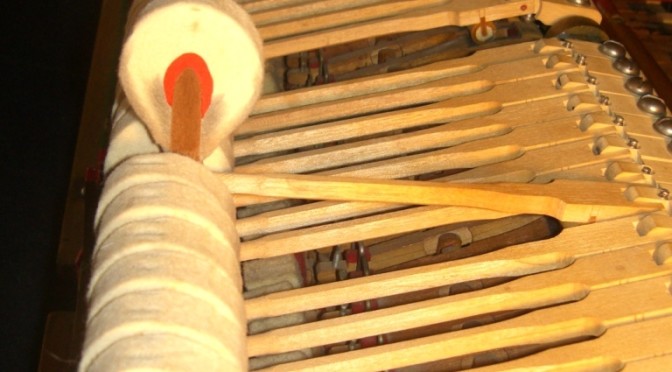We had a good laugh over that: How clueless can someone be? But in the world of used piano sales, that ad — so funny and unusual for a guitar — is the norm. The normal course of events, it seems, is that people buy pianos, abandon the attempt to learn them, use them as picture stands and plant display areas for 10 years, never tune them… then offer them for sale.
But after several years, a piano that is never played and never tuned may actually be unable to be tuned. Untuned pianos are not instruments: They are pieces of furniture.
So: Some bottom-line advice — Never try to buy or sell an untuned piano.
How Often to Tune a Piano
Ideally, pianos should be tuned whenever they fall out of tune. Professional technicians suggest FOUR times a year, but in reality, most people don’t tune their pianos more than once a year, which is probably the minimum to maintain it so it is playable. Twice a year is a much better schedule, especially in climates with wide swings of temperature and humidity.
Why tune a piano that isn’t played? Pianos are not static instruments: They are made of moving wooden parts, which change with changing conditions. These changes cause tension to change, wood to swell, adjoining pieces to rub against each other, and parts to crack — even if the instrument isn’t played. If an unplayed, untuned piano is then played, some of this damage may cause other problems to occur. When an instrument is tuned, it gets a regular “check-up” and minor problems can be fixed before they become major problems.
Piano strings exert literally tons of tension on the tuning pins and the pin block, and this tension needs to be correct and constant. An untuned piano will slowly lose tension, and when it is re-tuned, the pinblock may be unable to hold that tension. Result: the piano slips right back out of tune. Another possible problem: Strings that are not tuned may become so set in their position that they break when tightened.
If you haven’t tuned your piano in a long time, it may need to be tuned twice (a “double tuning”). The first tuning is a rough tuning that brings the strings up to the general tonal neighborhood they are supposed to be in, and the second tuning is a finer tuning. Sometimes, the process can be done in one day, but it’s not a bad idea to let the piano sit between tunings to get the strings used to the new tension.
There is a difference between a tuner and a technician. Most tuners can handle minor technical problems, but they may not be able to handle major problems. Most technicians can also tune, but some prefer working on technical problems and refer tuning jobs to tuners. If you are evaluating a piano, or having a piano tuned that hasn’t been tuned for many years, be sure to consult a qualified technician. The Piano Technician’s Guild has a list, sorted geographically. These experts can detect problems that may not be obvious, even to an excellent pianist or a piano teacher.
A piano costs thousands — sometime many thousands — of dollars. Tunings cost about $75 – $180 depending on your location and the extent of the work needed. This small investment can keep your piano working and suitable for resale.
And if you are thinking of buying a used piano that hasn’t been tuned in years, ask that the seller tune it, then bring along a technician to evaluate it for you. This will save you the trouble of buying and moving a piano that may turn out to be nothing more than a piece of furniture.


